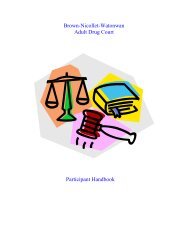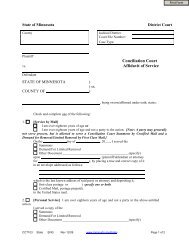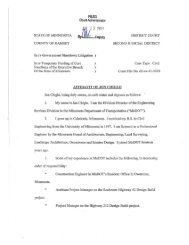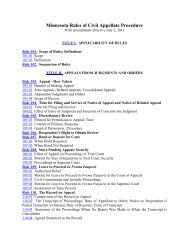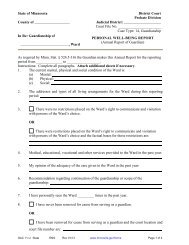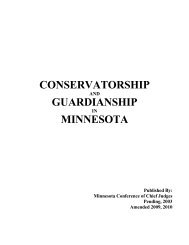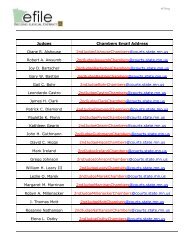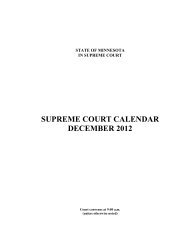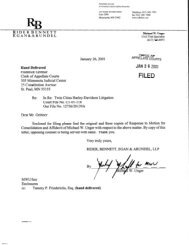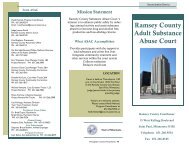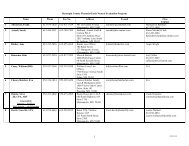1989-03-24 Comments of Star Tribune.pdf - Minnesota Judicial Branch
1989-03-24 Comments of Star Tribune.pdf - Minnesota Judicial Branch
1989-03-24 Comments of Star Tribune.pdf - Minnesota Judicial Branch
Create successful ePaper yourself
Turn your PDF publications into a flip-book with our unique Google optimized e-Paper software.
e effective.<br />
5. Court rules or standards in jurisdictions which permit cameras a<br />
and audio equipment in the courtroom normally prohibit audio pick-up or<br />
audio broadcasting <strong>of</strong> conferences that occur in the courtroom between<br />
attorneys and their clients, co-counsel <strong>of</strong> a client, opposing counsel or I<br />
counsel and the presiding judge held at the bench.<br />
The implementation<br />
<strong>of</strong> such prohibition appears to be accomplished either by the judge,<br />
court<br />
‘I<br />
‘I<br />
I<br />
reporter or counsel by turning <strong>of</strong>f a switch or by plicing trust in the 1 ~<br />
.<br />
medra for self-compliance. Considering the possibility that these perso<br />
may be preoccupied with the conduct o f the trial and may inadvertently<br />
overlook the problem, there does not appear to be any absol-*tely<br />
1<br />
fail-sa 1<br />
method <strong>of</strong> enforcing such a prohibition, although there was no evidence<br />
that this has a** ,Lually been a serious problem. I<br />
6. The possibility <strong>of</strong> lip reading, obtaining video images <strong>of</strong> work<br />
‘papers or gaining an impression <strong>of</strong> the tenor <strong>of</strong> conferences by viewing<br />
broadcasts <strong>of</strong> the video coverage, while recognized, does not seem to hav, R<br />
been generally prohibited or restricted.<br />
7. An experiment has been performed in Wisconsin (see Exhibit 17)<br />
and studies have been performed in jurisdictions other than <strong>Minnesota</strong>, 1~ ~<br />
notably Florida and ‘Wisconsin, endeavoring to find out what impact the<br />
mere presence <strong>of</strong> cameras and audio equipment might have on litigants,<br />
witnesses, jurors, counsel and judges. The experiment was based on<br />
simulated, as opposed to real, trial situations while the studies are<br />
based largely on the perceptions <strong>of</strong> the persons involved which, in some<br />
cases at least, appear to reflect preconceived notions or personal<br />
prejudices.<br />
I<br />
I<br />
’ I



